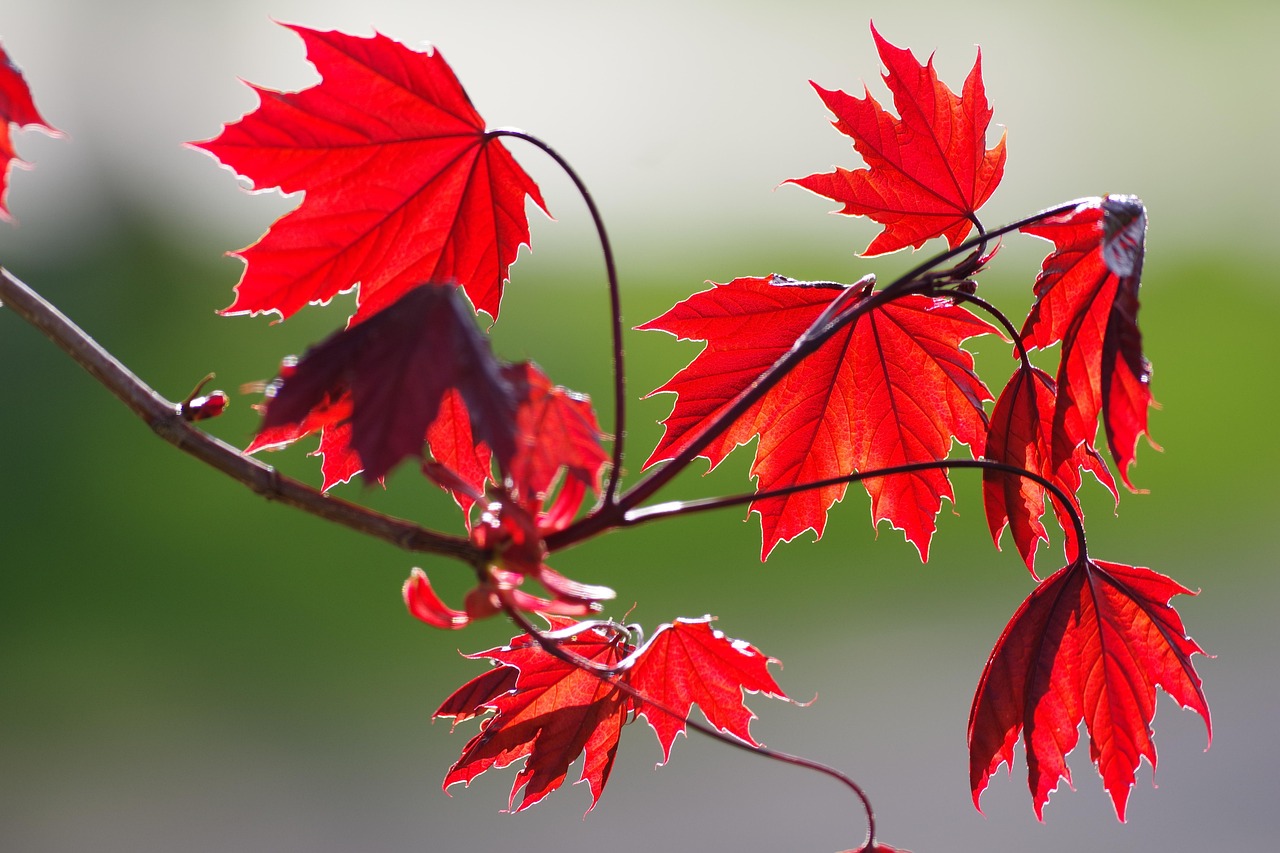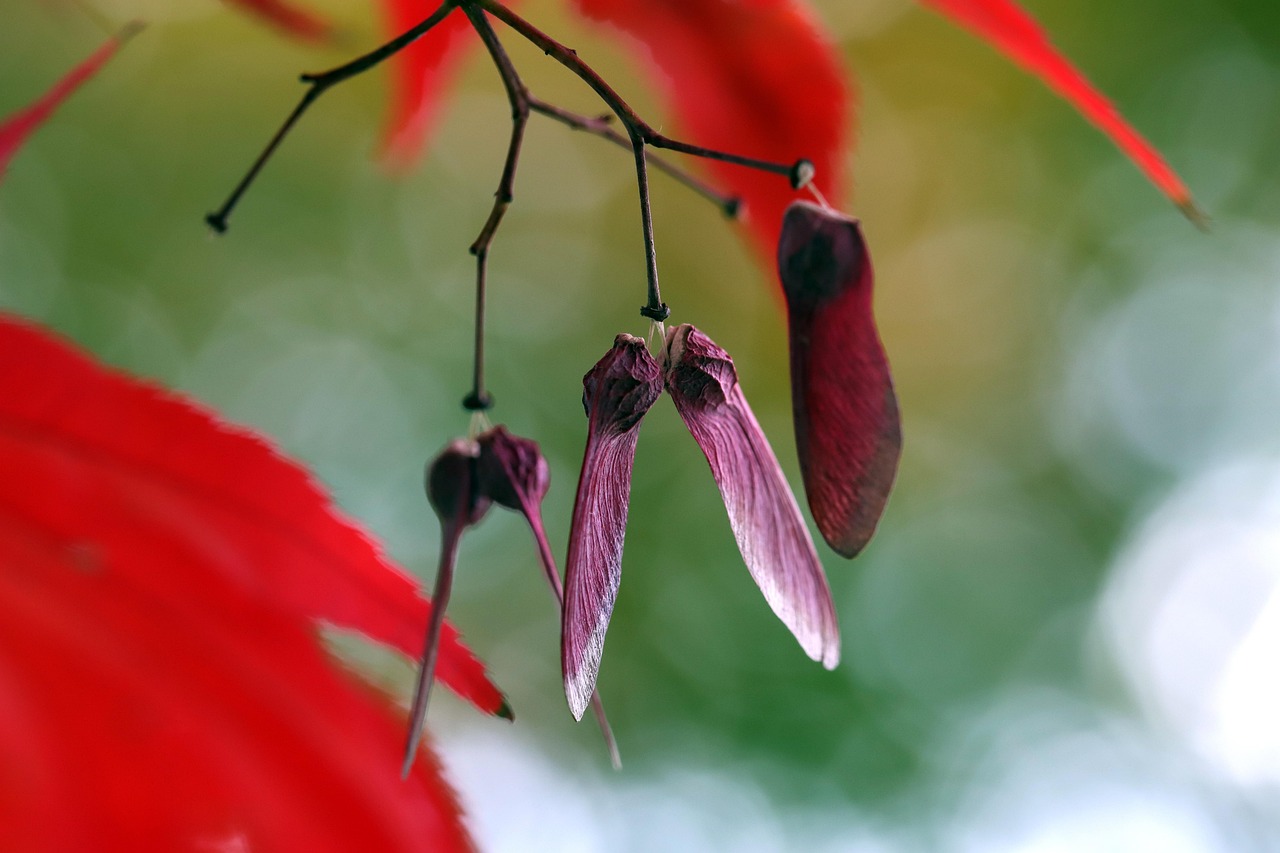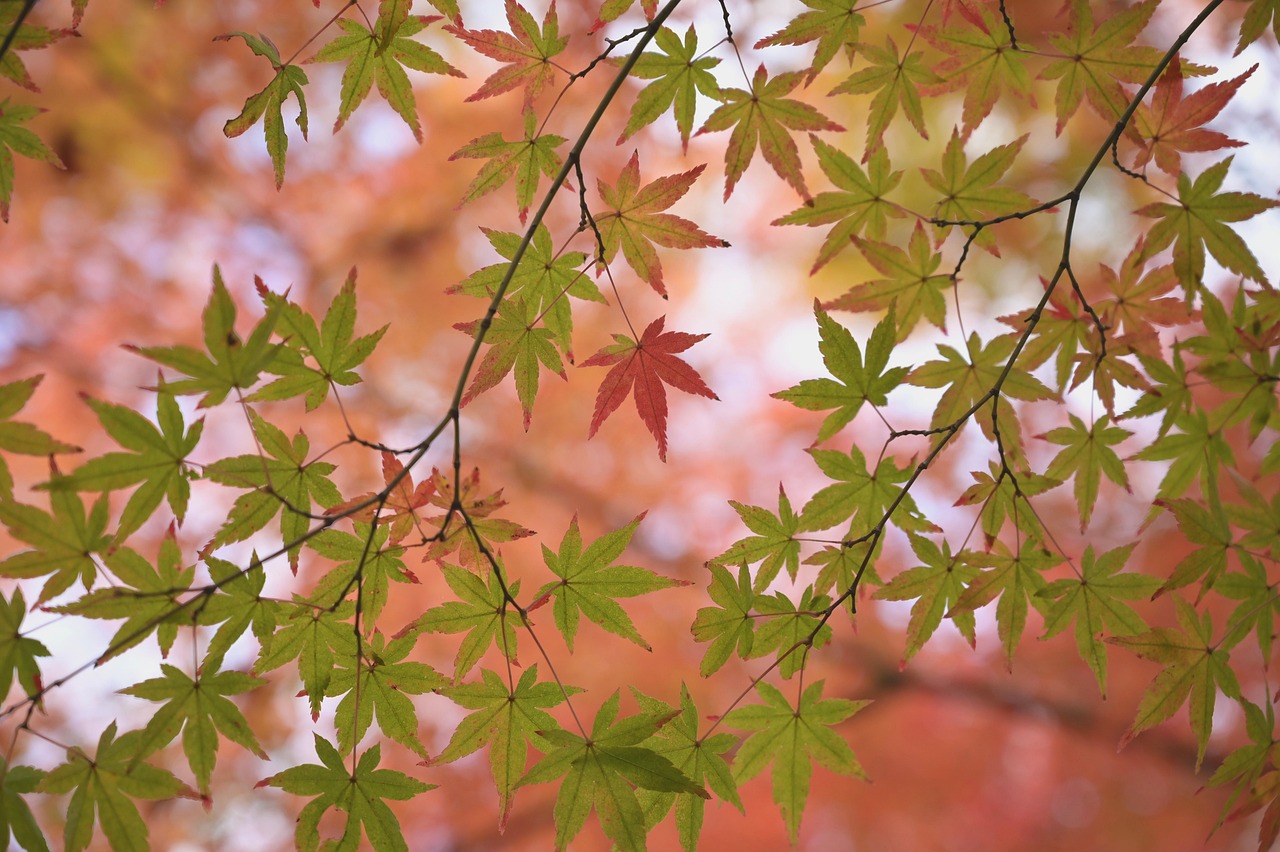Trees that resemble maple trees often include species such as sweetgum, sycamore, and various types of oaks. To identify them accurately, examine leaf shape, bark texture, and overall tree structure. Understanding these characteristics will help distinguish these trees from true maples.
Identifying trees can be a rewarding experience for nature enthusiasts and casual observers alike. Maple trees are well-known for their vibrant fall colors and distinctive leaf shapes. However, several other trees may exhibit similar features, making identification a bit challenging. In this article, we will explore trees that resemble maple trees, focusing on their key characteristics and how to distinguish them from actual maples.
Maple trees belong to the genus Acer, which has numerous species found across various regions. Their leaves typically have a palmate shape with lobes that can vary in number depending on the species. The most recognizable feature of maples is their stunning autumn foliage, which ranges from bright yellow to deep red. However, many other trees share similar leaf shapes or growth habits.
Common Trees That Resemble Maple Trees

Understanding the characteristics of trees that resemble maples can enhance your identification skills. Below is a list of some of the most common trees that may confuse you if you are not familiar with their distinguishing features:
- Sweetgum (Liquidambar styraciflua): This tree has star-shaped leaves similar to those of the maple. It produces spiky seed balls and has smooth bark.
- Sycamore (Platanus occidentalis): The leaves are broad and lobed like those of the maple, but they have a more coarse texture. Sycamores have distinctive mottled bark.
- Red Oak (Quercus rubra): Red oak leaves can resemble maple leaves due to their lobed structure. However, they are generally more pointed and have a different arrangement.
- Sassafras (Sassafras albidum): While its leaves can vary in shape, some may look like maple leaves. Sassafras has a unique aromatic quality when leaves are crushed.
When trying to identify these trees, consider the following features:
| Tree Name | Leaf Shape | Bark Texture | Notable Features |
|---|---|---|---|
| Sweetgum | Star-shaped | Smooth, grayish-brown | Spiky seed balls |
| Sycamore | Broad, lobed | Mottled, peeling | Large size, distinctive bark |
| Red Oak | Lobed, pointed tips | Rough, dark brown | Acorns are a food source for wildlife |
| Sassafras | Varied shapes | Smooth, greenish-brown | Aromatic leaves when crushed |
Each tree species brings its own unique characteristics to the landscape. Observ
Key Characteristics of Maple-Like Trees
When differentiating between trees that resemble maples and true maples, it’s important to focus on several key characteristics. Understanding these traits will enhance your ability to identify various tree species effectively. Below are the main aspects to consider:
Leaf Shape and Structure
The leaves of trees similar to maples often have lobes or serrated edges. However, variations exist that can help distinguish them. Here are some details:
- Sweetgum Leaves: Sweetgum leaves, while star-shaped, often have five points and a smoother texture compared to maple leaves.
- Sycamore Leaves: The broad leaves of sycamores are usually larger with three to five lobes and a rough feel.
- Red Oak Leaves: Red oak leaves have pointed lobes that can distinguish them from the more rounded lobes of some maple species.
- Sassafras Leaves: Sassafras can exhibit a range of leaf shapes, including entire, lobed, and mitten-shaped leaves, which are quite different from typical maple leaves.
Bark Texture and Color
Bark can be a significant identifying feature. Each tree type has distinct bark characteristics:
- Sweetgum: Typically smooth with a grayish-brown color, sweetgum bark may develop shallow fissures as the tree matures.
- Sycamore: The bark of sycamores is distinctive, often peeling in patches to reveal a greenish-white inner bark.
- Red Oak: Red oak bark is rough and dark brown, featuring ridges that become more pronounced with age.
- Sassafras: Sassafras bark is smooth and greenish-brown when young, turning darker with age.
Growth Habit and Size
The growth habit and size of these trees can also aid in identification. Consider the following:
- Sweetgum: Generally grows tall, reaching heights of 60 to 100 feet with a pyramidal shape when young.
- Sycamore: This tree can grow even taller, sometimes exceeding 100 feet. Its large trunk and broad canopy are easily recognizable.
- Red Oak: Red oaks can reach up to 75 feet tall and often have a rounded crown.
- Sassafras: Typically smaller, sassafras trees grow around 30 to 60 feet tall, often with an irregular shape.
Habitat Preferences
Another vital aspect of tree identification is understanding their preferred habitats. Here are general preferences for these maple-like trees:
- Sweetgum: Prefers moist, well-drained soils and is commonly found in bottomland forests and along streams.
- Sycamore: Thrives in wet conditions, often found near rivers and lakes, making it a common sight in floodplains.
- Red Oak: Adapts well to various soil types but prefers upland forests with well-drained sandy or loamy soils.
- Sassafras: Often found in woodland areas, sassafras grows well in both moist and dry soil conditions.
Seasonal Changes

Seasonal changes can also impact tree identification. Observing how trees change throughout the year is crucial. For example:

- Sweetgum: Exhibits vibrant fall colors ranging from yellow to purple.
- Sycamore: The leaves turn a yellow-brown hue in autumn but may not be as striking as those of maples.
- Red Oak: Displays rich red or russet colors in fall, adding to the confusion with maples.
- Sassafras: Offers a variety of colors in autumn, including yellow, orange, and red.
By paying attention to these characteristics—leaf shape, bark texture, growth habits, habitat preferences, and seasonal changes—you can sharpen your skills in identifying trees that resemble maple trees. Each feature provides clues that can help differentiate these species from true maples effectively.
Ecological Importance of Trees That Resemble Maples
Understanding the ecological roles of trees that resemble maples is vital for appreciating their contribution to the environment. These trees provide habitats for wildlife, improve air quality, and contribute to soil health. Below are some key ecological aspects to consider:
Habitat for Wildlife
Many trees that resemble maples offer essential habitats for various species. They serve as nesting sites, food sources, and shelter for birds and mammals. Here are some examples:
- Sweetgum: The spiky seed balls of sweetgum trees are a food source for squirrels and birds, while the canopy provides shelter for many species.
- Sycamore: The large size and broad branches of sycamores create nesting sites for larger birds and habitats for insects.
- Red Oak: Acorns from red oaks are a vital food source for many animals, including deer, jays, and squirrels.
- Sassafras: The aromatic leaves attract various insects, which in turn support birds and other predators in the ecosystem.
Air Quality Improvement
Trees play a crucial role in improving air quality. They absorb carbon dioxide and release oxygen through photosynthesis. The following points illustrate how maple-like trees contribute to cleaner air:
- Carbon Sequestration: All trees, including sweetgum and sycamore, absorb carbon dioxide, helping to mitigate climate change.
- Pollutant Absorption: Trees can absorb pollutants, such as sulfur dioxide and nitrogen oxides, improving urban air quality.
- Dust and Particulate Reduction: The foliage of these trees can trap dust and particulate matter, making the surrounding air cleaner.
Soil Health Contributions
The root systems of trees play an important role in maintaining soil health. Trees that resemble maples contribute in several ways:
- Erosion Control: Roots help hold soil in place, preventing erosion caused by wind and water.
- Nutrient Cycling: Fallen leaves decompose and enrich the soil with organic matter, enhancing nutrient availability.
- Water Regulation: Tree canopies reduce runoff by intercepting rainfall, allowing more water to infiltrate the soil.
Cultural Significance of Maple-Like Trees

Beyond their ecological roles, many trees that resemble maples hold cultural significance. They often feature in local traditions, folklore, and practical uses.
Traditional Uses
Many cultures have utilized trees like sweetgum and sassafras for various purposes:
- Sassafras: Historically used in teas and traditional medicine, sassafras has a long history of culinary application.
- Sweetgum: The gum from sweetgum trees was once used for medicinal purposes and as a chewing gum substitute.
Aesthetic Value
Trees that resemble maples also contribute to the beauty of landscapes. Their vibrant fall colors and unique shapes enhance both urban and rural settings:
- Landscape Design: Many landscape architects incorporate these trees into designs for their aesthetic appeal and seasonal color changes.
- Cultural Symbols: In some regions, specific trees may symbolize resilience or community values, reinforcing their importance in local culture.
Challenges Facing Maple-Like Trees
Despite their ecological and cultural importance, trees resembling maples face numerous challenges that threaten their survival and health.
Pests and Diseases
Many species are vulnerable to pests and diseases that can weaken or kill them. Common threats include:
- Aphids: These small insects can infest sweetgum and sycamore leaves, leading to leaf curling and reduced vigor.
- Oak Wilt: A serious disease affecting red oaks that can rapidly kill infected trees if untreated.
- Sassafras Canker: This fungal disease causes dieback in sassafras trees, impacting their health and longevity.
Environmental Changes
Environmental factors also pose significant threats to these trees:
- Climate Change: Altered weather patterns can affect growth rates and increase susceptibility to diseases.
- Urbanization: Increasing development reduces natural habitats, limiting the space available for these trees to thrive.
Recognizing these challenges is essential for conservation efforts aimed at protecting trees that resemble maples. By understanding their ecological roles, cultural significance, and the challenges they face, we can better appreciate these valuable species in our communities.
In addition to the challenges posed by pests, diseases, and environmental changes, human activity has a significant impact on trees that resemble maples. Urbanization, agriculture, and land development can lead to habitat fragmentation, which hinders the growth and reproduction of these trees.
Conservation Efforts
To address these challenges and ensure the survival of maple-like trees, various conservation efforts are being implemented. These include:
- Habitat Restoration: Initiatives aimed at restoring natural habitats can help create suitable environments for these trees to flourish.
- Public Awareness Campaigns: Educating communities about the importance of these trees can foster support for conservation measures.
- Pest Management Programs: Developing integrated pest management strategies can help control pests and diseases more effectively without harming the trees.
- Planting Initiatives: Community planting events encourage the planting of native species, including those that resemble maples, to enhance biodiversity.
Through these efforts, it is possible to improve the health of ecosystems while preserving the beauty and ecological functions of trees that resemble maples. Collaboration between government agencies, non-profit organizations, and local communities plays an essential role in these conservation endeavors.
Final Thoughts
Understanding trees that resemble maple trees is crucial for anyone interested in botany, ecology, or simply enjoying nature. By recognizing their characteristics—leaf shape, bark texture, growth habits, and habitat preferences—you can become more adept at identifying these species in the wild. Furthermore, appreciating their ecological significance helps underscore the importance of conservation efforts aimed at protecting these valuable trees.
As you explore your local environment, take the time to observe and learn about the trees around you. Whether you are hiking through a forest or walking in your neighborhood, the beauty and diversity of trees such as sweetgum, sycamore, red oak, and sassafras contribute significantly to our ecosystems and communities. Supporting conservation initiatives ensures that future generations can also enjoy the splendor of these remarkable trees.
Ultimately, fostering a deeper understanding of trees that resemble maples enhances our connection to nature and encourages responsible stewardship of our natural resources. By sharing knowledge and advocating for these species, we can collectively contribute to a healthier environment for all living beings.
